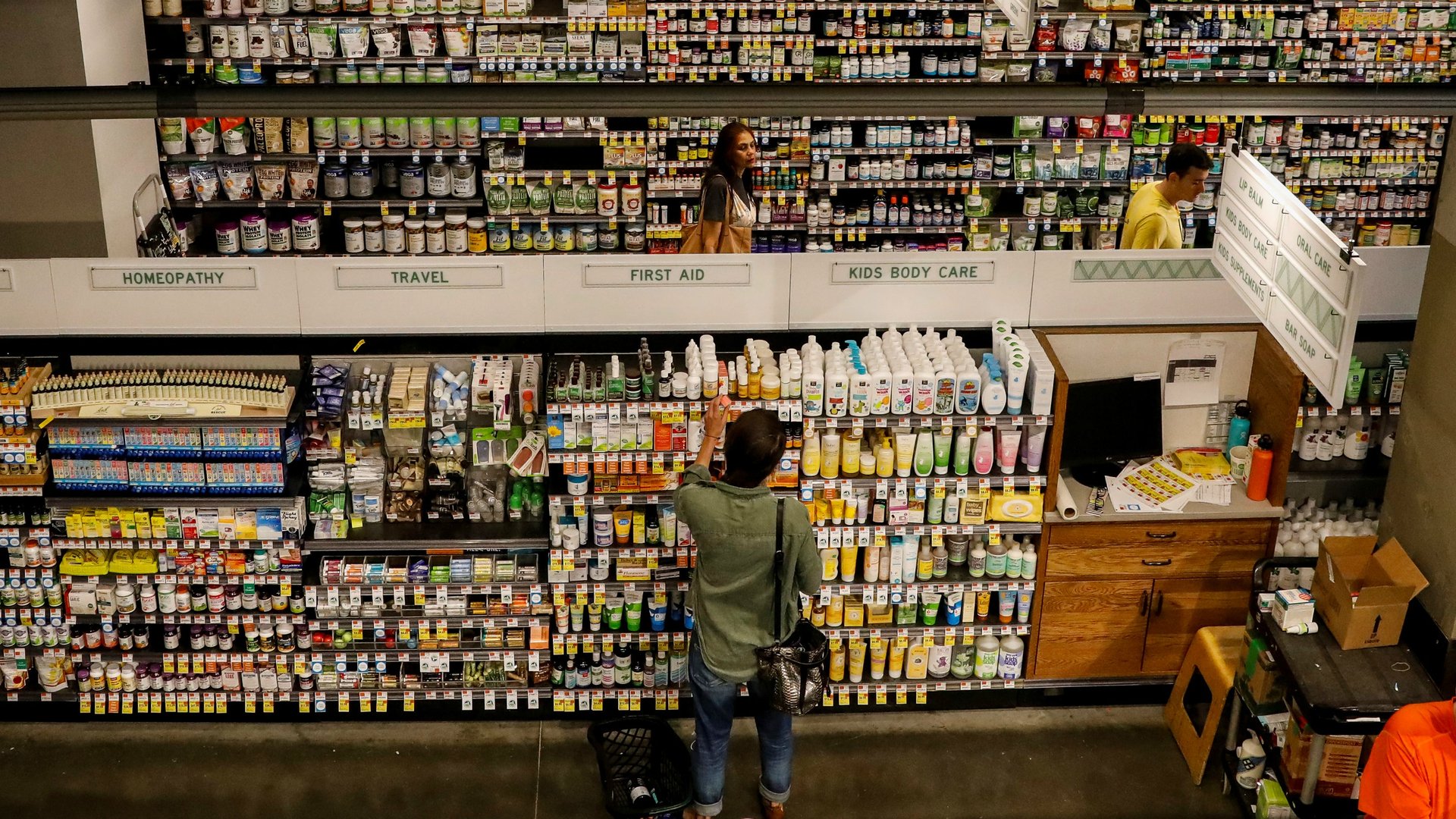Amazon’s attempted takeover of groceries is going to be a long, brutal slog
Amazon’s $13.7 billion takeover of Whole Foods Market was approved by US regulators last week, and almost immediately the Silicon Valley online retailer issued its breathless announcement that it would lower prices at Whole Foods stores.


Amazon’s $13.7 billion takeover of Whole Foods Market was approved by US regulators last week, and almost immediately the Silicon Valley online retailer issued its breathless announcement that it would lower prices at Whole Foods stores.
That sounds like big news for the supermarket industry and for US shoppers, but Amazon’s bigger effort to disrupt the grocery business won’t likely happen as quickly as some of the company’s past ventures. Consider first how little market share it commands, even with Whole Foods:
Approximately 90% of Amazon Prime subscribers live within 10 miles (16 km) of all 460 Whole Foods locations, a boon for the company and just one reason why the acquisition of Whole Foods was smart. But most of those stores are built up around urban centers. Walmart, on the other hand, has through the decades built a vast network of more than 4,600 stores across the US—putting it within 10 miles reach of 90% of the US population and, in some ways, giving it a logistical edge.
Of course, Amazon was similarly outmatched when it overpowered booksellers with sprawling networks of physical stores speckled across America. The main difference then was that it conquered those entrenched brands during the advent of the internet, when bookstores weren’t yet convinced online sales would take off. Today, Walmart and other competitors are deeply invested in e-commerce platforms.
In 2015, Walmart poured $900 million (paywall) into its online sales portal. The following year, it spent around $1.1 billion. Now it has 900 stores capable of handling online grocery orders for free pickup, and it expects to add (pdf) 500 more in 2018. It’s testing home delivery in markets across the country by partnering with Uber. Competitors such as Kroger and Publix are also investing in delivery.
Another challenge for Amazon will be managing an expanding employee base. Until now, Amazon has run a mostly behind-the-scenes operation—employees based in giant warehouses whose primary task is to assist in getting a package delivered. Rarely are they seen.
With Whole Foods, Amazon has scooped up hundreds of stores, a public-facing business with employees who interact with the public and are expected to keep stores running smoothly. It’s a different kind of business altogether, one that might prove difficult to operate for a company that has caught criticism (paywall) for its treatment of its workers in the past.